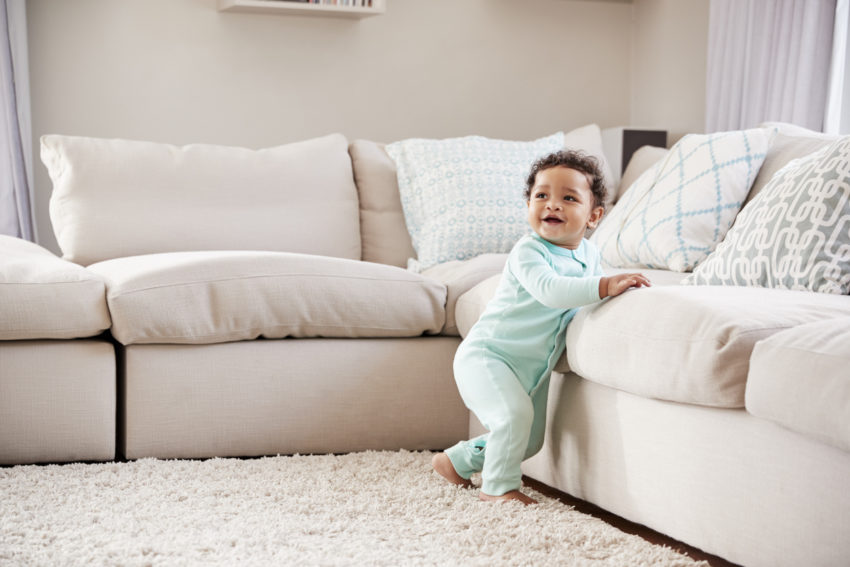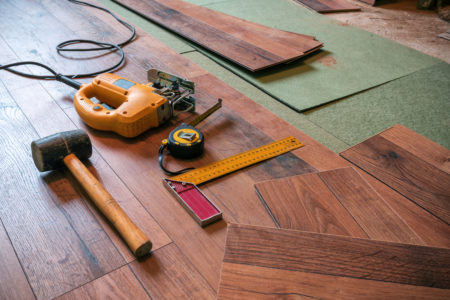
Share On Social!
Homes that have vinyl flooring or certain kinds of furniture are now known to raise the levels of potentially harmful compounds in children, according to recently presented research.
Flame retardant chemicals and cushioning in sofas raised children’s concentrations of polybrominated diphenyl ethers (PBDEs) six times in comparison to children not exposed to these chemicals.
Worse, kids who live in homes with vinyl flooring showed concentration levels up to 15 times greater than their peers.
“[These chemcials] are widely used in electronics, furniture, and building materials and can be detected in nearly all indoor environments,” said Heather Stapleton, a Duke professor and environmental chemist, who led the study. “Nonetheless, there has been little research on the relative contribution of specific products and materials to children’s overall exposure.”
Why are PBDEs Dangerous?
PBDEs side effects are linked with many adverse health complications, according to the Duke University study. Stapleton presented these findings at the American Association for the Advancement of Science in February 2019.
Issues children experienced during in laboratory study include:
- Obesity
- Respiratory disorders
- Neurodevelopmental delays
- Skin irritations
- Cancer
- Endocrine and thyroid disruption
Latinos experience health maladies, such as obesity and cancer, at significant margins. The items above found in households could be a factor in raising the already present risks, according to the study.
Even more alarming, the researchers’ conclusion illustrated the high impact these chemicals have on children. Due to the number of hours kids spend indoors, they are left vulnerable to exposure from sofas and flooring, Stapleton said.
“Our primary goal was to investigate links between specific products and children’s exposures, and to determine how the exposure happened,” Stapleton said.
What Information was Analyzed?
Stapleton’s team studied 203 children (20% Latino) who came from 190 different families throughout three years.
Studying the different environments of each home, researchers collected and analyzed indoor air, indoor dust, and foam from the furniture present.

When examining the effects of the collected material, members of the study collected children’s blood and urine samples. They also did a test to reveal what is on the surface of the skin, or hand wipe sample.
Their conclusion?
Over 40 biomarkers—bodily signs that can show degrees of exposure absorption—were measured in the children studied.
Is Your Sofa Hazardous?
Flame retardants have been regularly applied to furniture since at least the 1980s.
Stapleton said, in a video describing her research, not all items are straightforward about the substances they contain.
“Identifying what chemicals are on these consumer products can be very challenging for the general public because they’re not disclosed on the product or the labeling,” Stapleton said.
However, U.S. residents can mail in samples of their furniture to Duke University’s Foam Project for analysis. After submitting a form, then mailing in a sample, researchers will send back their findings and a fact sheet about the seven common flame retardants.
Other items also listed that contain flame-retardant chemicals, including baby strollers, foam mattress toppers, tents, and even yoga mats.
Editor’s Note: This article is part of a collaboration between Salud America! and the Hoffman Toxicant-Induced Loss of Tolerance (TILT) program at UT Health- San Antonio. To find out if you are TILTed due to exposure to everyday foods, chemicals, or drugs, take a self-assessment or learn more about TILT.
By The Numbers
142
Percent
Expected rise in Latino cancer cases in coming years



